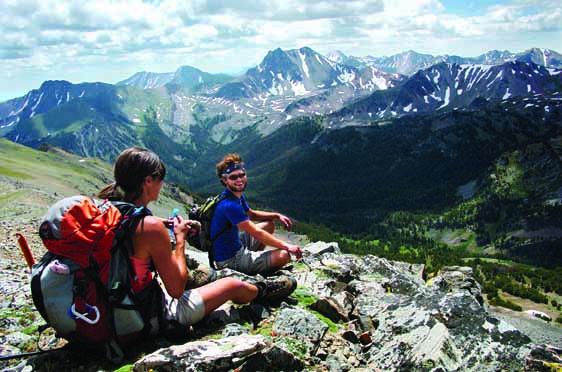Paying Homage
“Where ya headed?” I asked. He turned, occupied with the task of saddling his horse, and said simply, “up-valley.”
“Well,” I said, “have a good ride.”
Of course, I couldn’t let it go at that. There we were, at the Bear Creek trailhead in the Madison Valley, a quick entryway into the Taylor-Hilgard Unit of the Lee Metcalf Wilderness. You could see the Wilderness boundary sign from the trailhead. “Sure is nice to have places that demand old-timey ways of getting around,” I said.
“I suppose so,” he responded quietly.
It was a beautiful day. My dog Timber and I hiked to the top of Sphinx Mountain and back. It was early enough in the season that snow lingered on the north-facing slopes. Timber was especially fond of the cold water and opportunity to roll in the snow that these places afforded. I was especially fond of the views to the south, dominated by the likes of Koch and Imp Peaks.
When we returned to the trailhead, the same fellow was at the trailhead—this time unsaddling his horse. “Where’d you guys ride to, anyway?” I asked. “I didn’t notice horse tracks in the trail very far up-valley.” Turns out his ride was mostly to the north of Sphinx Mountain, and he mentioned something about “checking on his goats.”
“Now, Virgil”, said his wife, Donna, “you’re going to have to tell him the rest of the story.”
Virgil Lindsey is a retired district ranger in Ennis. He spent the bulk of his career there and had not long been responsible for management decisions affecting this part of Montana when, in September of 1964, Congress passed the Wilderness Act. Virgil had to inventory his forest and submit a list to Congress of areas he felt were appropriate for Wilderness designation. His “goats” were in fact mountain goats inhabiting the higher reaches of the Madison range.
It took awhile—almost 20 years in some cases, what with complicated land deals involving land swaps and consolidation of federal holdings—but thanks, in part to the dedicated efforts of Virgil Lindsey, the high alpine meadows and attending peaks of much of the Madison range are today part of the Lee Metcalf Wilderness. You can travel there today—on foot, horseback, or on skis and snowshoes during the winter months, and revel at the same beauty, as well as a newer generation of mountain goats.
But Virgil Lindsey did not act alone. The list of concerned individuals was long—as long as the uphill battle has been to protect, with Wilderness designation, some truly spectacular remnants of the American West.
The Wilderness Act was written by Howard Zahniser of the Wilderness Society. It created the enduring legal definition of Wilderness in the United States. Upon passage, the law initially protected some 9 million acres of federal land. Later, additional acreage was added—currently, over 109 million acres of federal land is Wilderness. The Act is well known for its succinct and poetic definition of wilderness: “A wilderness, in contrast with those areas where man and his own works dominate the landscape, is hereby recognized as an area where the earth and its community of life are untrammeled by man, where man himself is a visitor who does not remain.”
Seemingly endless, this acreage represents less than 2% of the land base in the lower 48 states. In Montana, Wilderness designation applies to 15 separate areas totaling 3.4 million acres, or a little less than 4% of Montana land. The Lee Metcalf Wilderness and the Absaroka-Beartooth Wilderness sit just north of Yellowstone National Park; the largest Wilderness unit in Montana is the Bob Marshall / Great Bear / Scapegoat complex totaling over one million acres.
These are magical, sacred places. But leave your car, motorcycle, ATV, skateboard, mountain bike, go-cart, wheelbarrow, etc. at home, as no motorized or mechanized forms of transportation are allowed. Go, as Ed Abbey would suggest, “by the simplest means—feet and legs and heart!”











